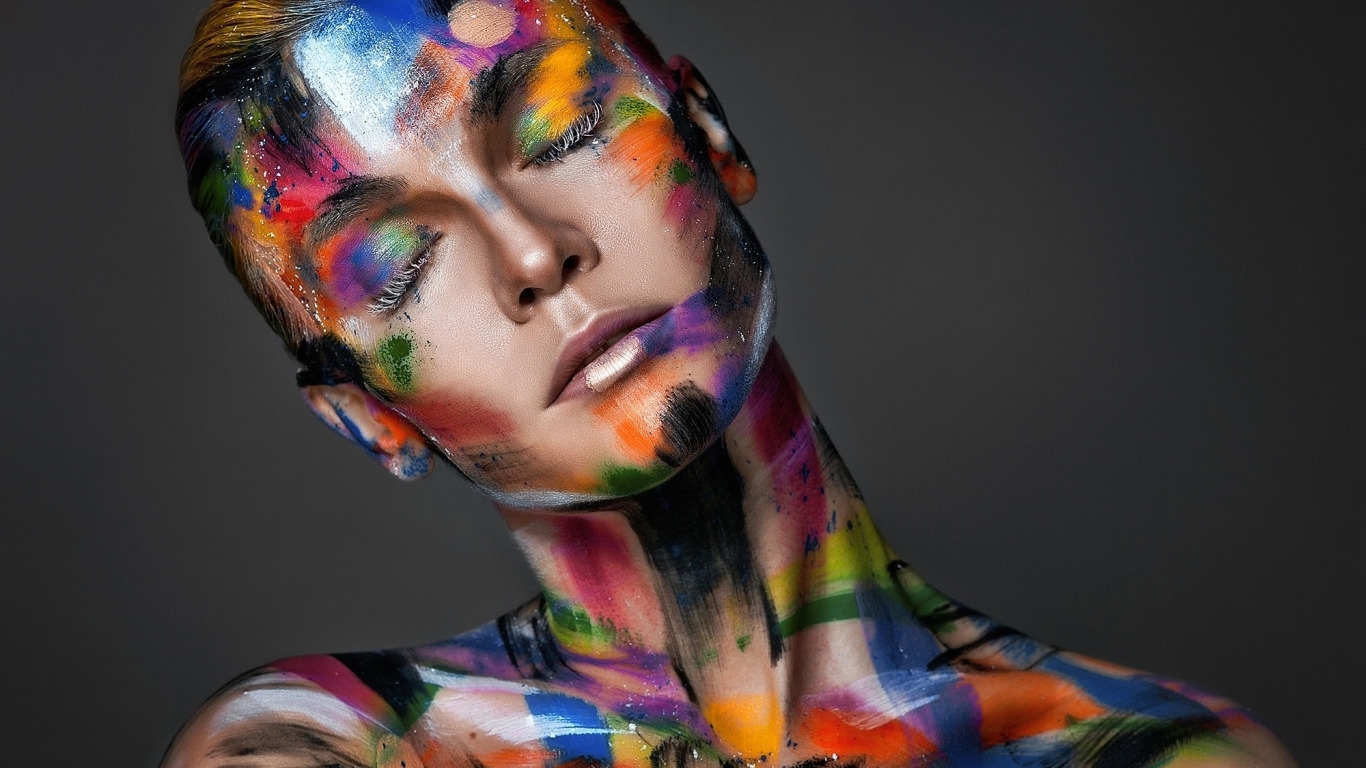Body Art

Body art is a form of avant-garde art that developed in the 1960s. The main object of body art is the human body, and the content is revealed with the help of non-verbal language: postures, gestures, facial expressions, applying signs to the body, "jewelry". The object of body art can also be drawings, photos, videos and body models. It developed mainly in line with performance and actionism.
The body is seen as a thing for manipulation, artists show an increased interest in borderline existential situations. Body art compositions are played right in front of the viewer or recorded for subsequent demonstration in exhibition halls. Body art influenced avant-garde fashion, manifesting itself in its elements such as piercings, scarring, tattooing, etc.
One of the first experiments in the spirit of body art in the XX century dates back to the 1910s, when Russian futurism in the person of M. F. Larionov proclaimed that "it is time for art to invade life" and that "face painting is the beginning of the invasion." Offering a program of various kinds of "coloring" and transformations of the appearance of male and female figures, Larionov implemented these ideas of mask-mummer body art in relation to himself and his comrades. Having painted their faces and turned themselves into living art objects, they went out on September 14, 1913 for a "futuristic walk" along the Kuznetsky Bridge.
Body art at the festival "Island»
Since the 1960s, body art began to develop intensively in Europe, as part of the aesthetic revolution of avant-garde, directed against the spiritual inertia of society, as an opposition to the former and especially generally accepted traditions of creativity, as well as to all surrounding social stereotypes in general.
The first body art session in the Soviet Union, documented by Western journalists, was held in his studio in Moscow by artist Anatoly Brusilovsky. An article with photographs of the performance was published in the Italian magazine "Espresso" in December 1969.
In 1964, in Vienna, the first demonstrations were the provocative nudist actions of Günter Bruce and the experiments of Rudolf Schwarzkogler related to various possibilities of body language. Their American followers study the relationship between poetic and corporeal language (Vito Acconci), as well as such angles of corporeality as a grimace (Bruce Nauman), a scratch (Dennis Oppenheim), a cut (L. Smith), a bite (Vito Acconci). The body as an object and means of art, its basis, is reflected by French theorists and practitioners of body art - M. Journiac ("Mass on the Body", "Contract on the Body"), D. Pan, W. Luti, F. Plushard.
Representatives of Body Art used their body as a material or object of creativity, resorting to a variety of sometimes painful manipulations: they covered their bodies with plaster, incisions, performed grueling breathing exercises, burned their hair, J. Pan (France) publicly hurts himself, Chris Burden (USA) encourages his friend to shoot him in the exhibition hall, R. Schwarzkogler (Austria) cuts off the flesh of the model piece by piece, who dies from blood loss, which is captured on photographic film. "Painting oneself - overcoming self-torture" and "endlessly tried suicide" - this is how Günter Brus, who, together with Otto Mühl and Hermann Nitsch, formulated the extreme masochistic but typical nature of body art experiments of the 1960s and 1970s, who, together with Otto Mühl and Hermann Niesch, founded the Viennese group Aktionismus (Aktionismus, 1964).
- Arts
- Business
- Computers
- Giochi
- Health
- Home
- Kids and Teens
- Money
- News
- Recreation
- Reference
- Regional
- Science
- Shopping
- Society
- Sports
- Бизнес
- Деньги
- Дом
- Досуг
- Здоровье
- Игры
- Искусство
- Источники информации
- Компьютеры
- Наука
- Новости и СМИ
- Общество
- Покупки
- Спорт
- Страны и регионы
- World


